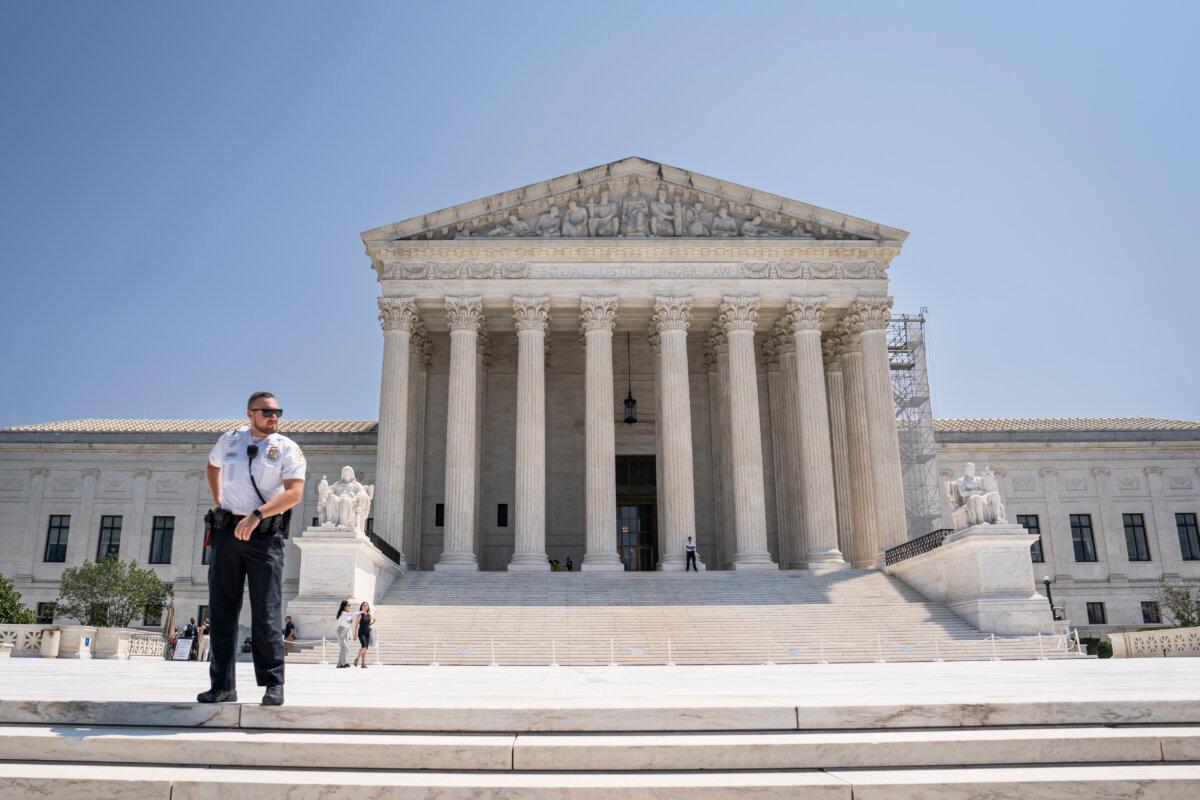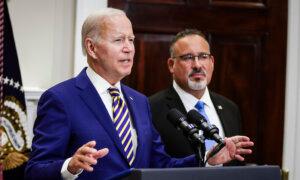The request came after a federal appeals blocked part of the $475 billion program.
Texas told the Supreme Court on Aug. 10 that it wants to press on with a pending emergency application to halt the U.S. Department of Education’s proposed student loan relief plan even after a federal appeals court blocked key parts of it.
The SAVE plan, first proposed by Education Secretary Miguel Cardona in August 2022, would lower monthly payments for millions of eligible borrowers and accelerate loan forgiveness for some borrowers. SAVE is an acronym that stands for Saving on a Valuable Education.
A reported 8 million borrowers have signed up for the program.
The major questions doctrine holds that courts should presume Congress does not delegate important policy questions to government agencies.
The circuit court’s injunction prevents the federal government from forgiving principal or interest on outstanding student loans, halts a provision stopping interest from accruing on loans, and blocks a provision allowing borrowers to make very low or zero monthly payments geared to income.
Hours after the ruling, Cardona posted on X, saying, “I strongly disagree with the Eighth Circuit’s decision blocking our Administration’s SAVE plan.”
“But here’s the info you’re really looking for: Borrowers currently enrolled in SAVE will be placed in an interest-free forbearance. [The Department of Education] will provide updates in the coming days.”
Before that, on June 24, at the request of two coalitions of Republican-led states that brought separate lawsuits, two federal district judges temporarily blocked parts of the SAVE plan while the cases work their way through the courts. They both found the department lacks authority to enact certain aspects of the plan under the federal Higher Education Act.
U.S. District Judge Daniel Crabtree in Kansas ruled that the parts of the plan already in effect may continue but blocked provisions that were supposed to take effect on July 1. One of those blocked provisions would have limited payments from 10 percent of a borrower’s income to 5 percent.
Previously, on June 7, Crabtree ruled that Alaska, South Carolina, and Texas “just barely” had legal standing to challenge the SAVE plan because they had shown the plan would have an adverse effect on state revenues.
Standing refers to someone’s right to sue in court. The parties must demonstrate they have a strong enough connection to the action complained of to justify their participation in a lawsuit.
In the same order, Crabtree found Alabama, Idaho, Iowa, Kansas, Louisiana, Montana, Nebraska, and Utah lacked standing and could not continue participating in the case.
The order by U.S. District Judge John Ross of Missouri blocked student loan forgiveness.
On June 30, the U.S. Court of Appeals for the Tenth Circuit put a temporary hold on Crabtree’s order and allowed income-contingent repayments to begin. The stay will remain in effect while the appeal remains pending.

The circuit court “enjoined the federal government ‘from any further forgiveness of principal or interest, from not charging borrowers accrued interest, and from further implementing SAVE’s payment-threshold provisions’ with respect to ‘any borrower whose loans’ are subject to the plan.”
Although the Eighth Circuit’s injunction does not provide Alaska, South Carolina, and Texas with “the full relief they seek … there is sufficient overlap to negate the need for emergency relief from this Court so long as that injunction remains in effect.”
Nielson also said the circuit court did not rule on related questions that Texas would like answered. He referred to the three states’ application which asked whether the department violated the federal Administrative Procedure Act by giving the public an unusually short period to comment on the SAVE plan before it was finalized.
The application said the department gave the public “only a month … to comment on a plan … that will cost taxpayers nearly half a trillion dollars.”
In the meantime, the Supreme Court should treat the emergency application in Alaska v. Department of Education as a petition for certiorari, or review, grant the petition, and schedule oral arguments, Nielson said in his new filing.
At least four of the nine justices must vote to approve a petition for it to advance to the oral argument stage.
The Epoch Times reached out to the U.S. Department of Justice for comment on Nielson’s filing but had not received a reply as of publication time.
Tom Ozimek contributed to this report.
Original News Source Link – Epoch Times
Running For Office? Conservative Campaign Consulting – Election Day Strategies!


